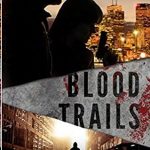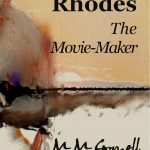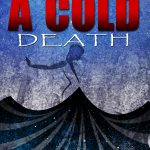PRESIDENT’S MESSAGE

Greetings fellow writers,
So much is going on right now and it makes me super excited to be part of this association and a member of the public safety writing world. Through PSWA, we just finished our annual writing conference and although I couldn’t be there this year (I missed you all terribly) I heard it was again “the best one ever.” This seems to be becoming a theme. No surprise as the organizers, especially Conference Chair Mike Black, work hard to make sure that the program provides everything most people need including writing and public safety topics. No other conference can boast the diversity of presentations and panels that we do in this area. Also a shout out to Nancy Farrar and her minions for making sure all the logistics were taken care of. The Orleans continues to be a financially reasonable, options rich venue and we’re happy to partner with them. If you weren’t able to make the conference this year, start planning for next July as we’ll be providing this cozy, invaluable networking and learning opportunity once again.
I would be remiss if I didn’t again congratulate all of the 2017 PSWA Writing Competition winners. Another crop of new and veteran writers are once again able to slap those “Award Winning Author” stickers on their work, their blog, their website, their publisher’s pages, wherever. Remember the name of our game is promotion, promotion, promotion. Even though the contest just ended, this is a good time to start thinking about next year. Start writing or editing your masterpieces and plan on entering in 2018.
Just a word about where I’m at because I love to be able to share my writing world with all of you. I’m continuing to write my bi-monthly columns for Officer.com, one on Juvenile Justice and one on Communications. I regularly contribute feature articles for Law Enforcement Technology Magazine. I write fundraising letters and PSAs for the local ferret shelter. I’m in discussions with a tech company about providing marketing materials. AND, I am in the writing phase of my book, 911 Dispatchers: Inside the Lives of the Forgotten First Responders and their Families. I let myself become a bit undisciplined over the last 6 months, I’m afraid, but I’ve rededicated myself and am scheduling one hour a day to sit down and do my writing.
If I focused as much on this as I do exercise I could write a book every 6 months. I’m sure I’m not alone in this especially among those of us who still work a day job (or two). Anyway, I truly believe that writing is a calling and that is why no matter what I do or how I fill my days there is a voice in the back of my head ordering me to get thoughts on paper. So, I’m trying to listen. As fall slowly edges out my supreme Pacific Northwest summer, I envision crisp, clear days curled up with my computer sharing my story with the world. I hope I’ll have PSWA company throughout the US and Canada joining me in spirit as we plaster the world with our words.
Until next time keep writing.
Michelle Perin, President
VICE-PRESIDENT’S MESSAGE
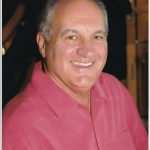
Stepping In
A couple of months before the 2017 PSWA conference we, the Board of Directors, were advised by President Michelle Perin that due to her work obligations she would regrettably be unable to attend the event. That meant that as the Vice President the MC duties fell upon my shoulders. Wait, what? I had been the VP for all of maybe three months and instant panic set it. What, exactly, were the MC duties? Would I be effective and engaging? Would I make a complete mess of it, or would chaos ensue due to my pitiful efforts?
So, relying on the expertise of our former and current president, I learned what I needed to do and, more importantly, the importance of keeping the pace of the conference consistent and on schedule, which is a lot like trying to herd cats!
I found out that the MC role was the easiest part of the position. I quickly learned that there is so much more going on in the background that requires the board’s attention, that in spite of the months of work our conference committee puts into organizing this great event, nothing ever goes as smoothly as we anticipate. There were constant problems and flare-ups that needed to be handled to keep the conference on course. Thank goodness we have the best people on the committee.
Tim Dees is an absolute wizard when it comes to electronics setup and control. Whatever problems popped up, which always seemed to happen at the most inopportune moments, Tim was on it immediately and managed to fix it quickly.
Mike Black selected and organized the wonderful panels and speakers, a very intense and stressful job. We had speakers and panelists that had to withdraw due to illness or other reasons at the last minute yet Mike handled each adversity quickly, assuring that the program did not suffer from these unexpected situations.
Nancy Farrar is our event contact with the Orleans Hotel and would constantly handle all the small, and sometimes large, problems with the hotel’s conference staff who would quickly correct those problems, whether adjusting the room temperature or getting water and coffee setup to problems with the catering. By the way, kudos to the hotel event staff for their constant and complete attention to our needs. They were very attentive and responsive to our needs and exhibited true professionalism. They were a behind the scenes reason why the conference ran so smoothly.
I think the single most important thing I learned is that our conference committee is dedicated to producing the best conference possible and are unselfishly working hard to accomplish that. It is a year round voluntary job that requires a lot of time and effort, yet I did not hear anyone complain. I was amazed at how much effort is needed in organizing the conference and how much goes on behind the scenes, as I had no idea prior to becoming a board member. There are several others who deserve a shout out, including our keynote speakers, panelists, moderators, and bookstore staff, too many to mention individually but you know who you are and you deserve a hearty thank you.
Everything I learned from being the MC merely confirmed that I am truly happy to be a part of this great organization as a board member and author. Not only is our conference of great value, and fun, but I feel I have made many friends through the years and have honed my writing skills for the better.
Hope to see you all at the 2018 conference!
John Schembra
Vice President
ANOTHER ONE FOR THE AGES: THE DYNAMIC DOZEN

Well, the 12th annual PSWA Conference, informally known as the “Dynamic Dozen,” is now one for the history books, and let me tell you, it was a doozy. Despite a bunch of unforeseen problems that popped up, the post-conference evaluations rated this one as one of the best ever. If you missed it, I feel sorry for you, but don’t fret. I’ll tell you at the end of this one who the mysterious Gus Pleblesly was.
But first, let me give you a review, for the benefit of those who could not attend.
On Thursday morning at 9:00 AM we opened with the pre-conference workshop. Marilyn Meredith, Mar Preston, and I held this intensive and personalized workshop for seven individuals. As always with a session like this, I learned a few new tricks as well, even though I was one of the instructors. This butted up against the check-in procedure, which I handled at 3:00 PM. By the time the evening get-acquainted party began, I was ready to collapse.
The conference officially began at 9:00 the next morning, with opening remarks by Master of Ceremony, John Schembra. John did a bang-up job and set the tone of excellence that was to follow. Our very own Ron Corbin was our first speaker and talked about CPTED, aka Crime Prevention Through Environmental Design. Ron detailed so many interesting concepts with this presentation that I was enthralled, as were those in the audience. There were a lot of good tips in this one that could be applied to your writing and your life.
The panels opened up with yours truly doing the moderating. As promised, I told my old Dean Martin joke about the grasshopper that walks into a bar and orders a scotch and soda. The stunned silence after I’d delivered the punch line reminded me that I was no Dino, but I quickly added, “It was funny when Dean Martin told it.” We opened up with some good stories about police work and got some personal perspectives on what it’s like to walk the walk.
As I previously mentioned, we did have a few mishaps. Fabulous Marcia Rosen was recovering from an unexpected illness and could not attend. Having already sent a set of great workbooks to augment her presentation on Marketing Your Work, Marcia’s son, Jory, graciously came to Vegas a day early and substituted for his mom. Jory turned out to be a very engaging speaker both in his fill-in role and in delivering his own presentation the next day, “The Key to Pitching Your Book in Hollywood.” Jory, who has his own public relations firm in LA, showed us some very intriguing video presentations which his firm created that led to a movie deal.
Mar Preston’s solo presentation, “Writing and Editing Your Mystery,” gave the lowdown on completing your book by taking the audience through the writing process from the beginning, middle, and end as well as providing a comprehensive overview and explanation of the underlying structure of the mystery novel.
Both of these presentations got rave reviews on the evaluations.
We had industry professionals Austin Camacho (Intrigue Press) and Geno Munari (Houdini Press) on hand for our publisher’s panel. Susan Moore was also on the panel giving her perspective on helping writers in self-publishing ventures.
Our now-famous radio play on Saturday evening this year once again featured our real life intrepid crime scene scientist, Steve Scarborough, as his fictional counterpart, Ellery Queen. Steve and the PSWA Players performed “The Mystery of the Circus Train” to the delight of the audience.
All of the panels received rave reviews on the evaluation sheets, and I concur. As usual, we had a great combination of public safety professionals and experienced writers giving invaluable advice. Space prevents me from going into more detail regarding the panels, but suffice it to say, they were all top notch. Our final panel on Sunday included an actual audio recording of a police shooting that our own Tim Dees was involved in during his time with Reno PD. The audience was riveted as Tim described the steps of how the incident occurred, and what he was thinking. With the group we had on stage for this panel, I’d have to say that those who had to leave early missed the best panel of the conference.
We missed beautiful Michelle Perin, our PSWA President at the awards presentation this year, but we’ve got her on notice to be at the next one. Once again, John Schembra stepped up to do the job and made the presentations. My congratulations to all the winners. In the words of my Uncle Dede, “They all done good.”
Well, things are already percolating for next year’s big affair, our 13th, which I’ve already tagged “The Baker’s Dozen.” Plan on being there, and if you have any ideas, I’ll be glad to hear them.
Oh, I almost forgot about the elusive Gus Pleblesly… If you didn’t already know, he was one of the three main characters in Joseph Wambaugh’s great novel, The New Centurions. Gus was called “the runner” in the first chapter about the police academy because he was the only recruit who could keep up with the extremely fit instructor. Like I said, he could’ve given Bruce Jenner a run for his money.
–Michael A. Black, Program Chair
CPTED TIP/CONFERENCE FOLLOW-UP
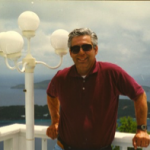
I was privileged to be one of this year’s conference presenters. My topic was on Crime Prevention Through Environmental Design, commonly referred to as CPTED and pronounced SEP-ted. For those in attendance, you’ll remember that I left you to ponder some common CPTED problems. I thought this newsletter would be a good means of addressing these issues while things are still semi-fresh on your mind.
For those of you who couldn’t make the conference, and have no idea what I’m talking about, go to this part of my Web page and look for a series of CPTED articles. http://www.rcorbinsecurityauthor.com/safety_tips
The topics of those things left for discussion were:
- The “Three-7” Rule In Landscaping
- Slowing Neighborhood Speeders
- Speed Bumps–A Better Design
- Tilting Apartment Carport Covers
- Which Way Should Pool Gates Swing–Inward or Outward?
- Pros and Cons of Fencing Types
So if Marilyn decides to allow me a second article and without “hogging” the PSWA Newsletter, I am going to talk about one of these CPTED issues. I will use it as a teaser for future newsletters and follow-up discussion.
The “Three-7” Rule in Landscaping
Most criminals don’t want to be seen in the commission of their criminal act. This definitely applies to home burglars. One way that you can reduce the opportunity for burglary is to practice the “Three-7” rule for landscaping your house or business…especially in front of windows.
Trim all the shrubbery and bushes around your residence so that they are no taller than three feet in height. Cut low-hanging tree branches so they are at least seven feet or higher. What this provides is a clear zone or space with an open view to your house or business. It takes away a natural hiding obstruction for burglars trying to break into your structure.
Look for more of these CPTED tips in coming newsletters. And if you have specific questions about a certain nuisance or crime reduction issue, feel free to contact me at phdav8r@yahoo.com
Stay Safe!
Ron Corbin
Author of Award Winning “Beyond Recognition”
A WINNING SHORT STORY PUBLISHING STRATEGY

Preparing for a panel on “short stories” for June’s Deadly Ink conference for mystery/crime writers, I studied the stack of five print publications in which my work has appeared this past year. This was in lieu of doing any actual preparation, you might suspect. I realized each of them had a publication lesson for me—and possibly other authors. So here goes:
Don’t Dismiss Limited-Circulation Outlets
Five of the last six years I’ve had a story in the U.S. 1 Summer Fiction Issue. Yes, it reaches a small audience, but at a max of 2000 words, the time investment in these stories isn’t massive and I keep the rights (more on that later).
The benefits: reminding myself at least someone thinks my work is good enough to invest ink and paper in, the satisfaction of meeting an actual deadline—in creative work you sometimes need an end-point—and, best of all, cultivating a local group of writer friends for support and commiseration. My 2016 story: “What Would Jimmy Stewart Do?”
Prepare for Rejection
Are you thrown into a funk that’s hard to crawl out of when a story’s rejected? Take heart from realizing that all short story outlets today receive far more “publishable” material—stories they like—than they have room for. The literary magazine Glimmer Train, which has given several of my non-mystery stories a thumbs-down, publishes about 60 stories a year. The editors receive 32,000 submissions. Those 60 stories may be fantastic, but they simply cannot be the absolute “best” ones.
I expect rejection. And I plan for it. When a story of mine comes back from outlet x, I read it through, fix anything obvious, and right away send it to outlet y, then z. Last year, I sent a rejected story to a new outlet whose editors want to feature female protagonists. They accepted it gladly, and eventually, it won a Derringer Award from the Short Mystery Fiction Society. You can read that story—“Breadcrumbs”—here.
[Ms. Weisfeld’s website is being repaired, but you can read about that story—“Breadcrumbs”—here until she is able to post it again. — Web Wrangler Mystii]
Timing, Timing, Timing
Ellery Queen Mystery Magazine is one of the premier, if not the premier outlet for short mystery fiction. I wanted another story of mine in it. So last spring, I wrote a Christmas-themed story, hoping they’d want it for the annual Holiday issue. I sent it in June, to give them plenty of time to think about it. Planning for rejection, even if they turned it down in their usual six to eight weeks (ask me how I know!), I’d have time to submit it elsewhere. They did not, and it appeared in the January-February 2017 “’Tis the Season” issue.
Meet the Requirements
I know writers who become so wrapped up in writing “their” story that they ignore editors’ guidance on the theme, length, and so on. Dissect calls for submissions for clues to what they’re looking for. Don’t expect to be the exception, and don’t make it easy for editors to reject your work! I wanted to submit a story to an anthology about police work. I had such a story in mind. A 6,200-word story. The editors’ limit was 5,000. I liked those 1,200 words, but they went the way of the blue pencil (and the story was probably better for it). It was published in April.
Mine Your Backlist
Novelists have a “backlist” of books published in past years. Short story writers do too. When I see an outlet looking for a theme I’ve written on, I check whether the editor will accept reprints. Last October an online magazine republished one of my U.S. 1 stories that had a Halloween theme; I own those rights, remember? In April, a minor edit to a story published in a lit magazine (rights also mine) tailored it for an anthology. Taking advantage of these opportunities puts your work in front of new people and is a refreshing glass of water in the desert of seeming indifference.
Getting a short story published entails more than a small amount of luck, but if you’ve written a great story, you can increase the odds it will reach readers by being strategic about when, where, and how you engage with potential publishers.
By Vicki Weisfeld
YOUR DETECTIVE DOESN’T SOLVE CRIMES ALONE

Supporting Characters
Many law enforcement investigators have partners. But not all. You may not need many supporting characters if you have an active partner, confidante, or love interest. But make every character in your book individual and note-worthy, even if it’s just a clerk in the registry office. For example, the clerk is wearing a Support Our Troops button and yanks the papers out of your protagonist’s hand, demanding payment in a Brooklyn accent. Every character may not further the plot, but don’t be content with generic characters like “a woman” or “the clerk” or “the driver.” Unless your character count is piling up and you’re aware that the reader could become confused.
Work to give each person mentioned in the course of your story a suggested backstory. It only takes a few deft strokes. For example, the clerk your detective talks to who has a side business in fire extinguishers.
Witnesses: Somebody had to see something, even in those mysteries where nobody saw nuthin’. They may step forward willingly or have to be smoked out during the investigation. A witness may be one of your red herrings or develop into an actual suspect.
Witnesses can be telling the truth or lying. Play with the lie idea a bit. Misinformation and misdirection can have your detective doing surveillance until 3 a.m. peeing in a bottle, or driving 90 miles on a fruitless quest while the killer is up to no good back at the ranch.
Experts: Investigators depend on information gleaned from outside experts, medical people, law enforcement, or even the DMV. Databases are wonderful and many can be purchased, but a private detective often needs somebody on the inside of an agency to run searches for her. Remember that no database is free of error or up-to-date. Experts can make mistakes. There’s a plot idea to run with.
Where Do You Get Character Ideas?
If you are not already a watcher and a note taker, this is the time to start. The next time you’re in a crowd, notice what kind of shoes people have on. If you’re not a young person, take notes on the clothes the twenty-somethings are wearing. If you’re young, notice the tops and hairstyles of older women. Could you describe the clothes babies and toddlers are wearing nowadays? Describe the houses and apartment buildings nearby. A single block of the street where you live.
If you see or hear something interesting, write it down. Don’t think you’ll remember details. You won’t.
Write it down or sadly, it’s gone.
You might check out my EBook Creating Killer Characters available at Amazon. Cheap. It’s part of a series titled Writing Your First Mystery.
–Mar Preston
PLANNING AND IMPLEMENTING A SUCCESSFUL BLOG TOUR

Though there are companies that will arrange a blog tour for you for a price, you can create a better one yourself. Of course, the planning needs to begin long before your book is going to be available.
Identifying the Blogs
Find the blogs that you like best that also host authors. You might want to see whether they have many followers, though I’ve not worried about this much. (Speaking for myself, a lot fewer people “follow” my blog than visit it regularly. — Vickie)
Approach each one and tell them a bit about your book and yourself and ask whether they would be willing to host you on your tour. If they say yes, then settle on a date, and keep good track of those dates!
Be sure the blogs you choose allow comments. And it’s best if they aren’t moderating the comments. (If they do moderate, ask them to be sure and do it often on the day you’ll appear on the blog.)
Crafting the Content of Your Posts
Find out what kind of post each host would like you to write for their blog—try to do something different for each one. Some may want to do an interview, and if you have a lot of those, it’s a good idea that after you cover the basics, you add some new information about yourself. Some blog owners have very particular ideas about what they want, be sure to follow their rules. In most cases, they’ll probably tell you to pick your own topic.
Some ideas for blog posts are: an interview with your main character—or the villain; 10 things no one knows about you; what gave you the idea for this particular book; what you are going to do to promote the book besides the blog tour; the setting for the story; your best writing tips; a description of the place where you write or any writing rituals you follow; and of course an excerpt or a first chapter of your book. If a blog host also wants to review the book, that’s great.
Every blog post you send out should include a short bio, a blurb about the book, all of your links including the one enabling readers to buy the book. Add as attachments the book cover graphic and a photo of yourself. I think it’s fun to send a different photo to some of the blogs just for variety.
Add a Contest?
To get people to visit all the blogs on your tour, you might plan a contest of some sort, with the winner being the person who leaves a comment on the most tour blogs. Some authors give away a copy of the book they are promoting, but since you’re having the tour to get people to buy the book, it’s better if you give away a different book or something else altogether. What’s worked well for me is to give the winner the opportunity to be a character in one of my mysteries.
The Successful Blog Tour: Doing It!
Implementation Steps
Be sure to proofread each one of your blog posts before you send it to the blog host. Send it ahead of time with a mention of the date it’s supposed to appear and ask the host to let you know whether they received everything.
Your work is not done once you have the tour set up and your posts on their way. You’ll want to make sure the post is up on the prearranged date. Sometimes there are problems. Though most blog hosts set up the post ahead of time to appear on the right day, one or two might not. Send a polite email reminder.
Every day of your tour, you must promote the blog you’ll be visiting. Send announcements to your friends, the lists that you’re on, and to all your social media sites like Twitter, Facebook, Facebook groups, etc.
Visit the blog and leave a thank-you. A few times during the day, check and see whether anyone has left a comment, and thank each one for visiting. If someone asks a question, be sure to answer it. This is important. It will make the difference if you ever want to do another guest spot on that particular blog. If you’re having a contest, keep track of commenters’ names and how many times they leave comments.
Does a Blog Tour Work?
I’m sure your biggest question is, does a blog tour work? If you mean does it result in sales, it’s kind of hard to determine, but I do know whenever I’ve been on a tour, my sales ranking on Amazon has improved—which is a good thing.
One last remark about blog tours, I think they are fun. To me, it’s a challenge to come up with new topics to write about for each blog. I also love going back to see who has visited. And remember, for all those who leave comments, there are many, many more who merely read the blog and didn’t write anything.
Blog tours are another way to get your name and information about your book in front of the public. And isn’t that what we are all trying to do?
–Marilyn Meredith
https://marilynmeredith.blogspot.com
CLIFFHANGERS: MAKING THEM WORK

Mystery and thriller writers are often advised to end chapters with a cliffhanger to propel the reader forward through the narrative, to create those page-turners, to make them read “just one more chapter.” Writing cliffhangers sounds like one of the easier bits of lore to follow, but it can be deceptively difficult to write good ones.
Simple Guidelines
- Don’t repeat the same formula too often, like asking a question—Would the police arrive in time? (I’d advise almost never using a question, but that’s me.)
- Remember that something that sounds compelling to you, embroiled as you are in the fates of your characters, can come across as ho-hum obvious to the reader. In a new thriller about the search for a serial killer, one chapter ends with the head police investigator saying, “We have to find him.” Well, duh.
- Include a hint of what’s to come. This can be done well or, in this case, badly: “As she stood alone on the once tranquil country lane, she had the distinct feeling that this peace was about to be brutally shattered.” That’s the author strolling into the scene and explaining. Reader responds, “I hope so. This is a thriller!”
- A good general rule to write on a post-it and stick it to your computer screen is this, then: never be cheesy. If you find you’ve written a cliffhanger that’s no more than a transparent attempt to ramp up the tension, better to delete it. I’ve jettisoned plenty of them.
Origins
Although the movie The Perks of Being a Wallflower would have you think differently, Dickens did not invent the term cliffhanger (though he certainly used it). That honor goes to Thomas Hardy, whose serialized novel A Pair of Blue Eyes left protagonist Henry Knight hanging off a cliff, from whence he reviewed the history of the world.
Because Charles Dickens also serialized his novels, with people in England mobbing the newsstands and Americans clamoring for arriving ships to unload the publications containing the next chapters, I figure he knew a thing or two about writing an effective cliffhanger, one that would kindle enough interest in readers to last a week or even longer. If you have any Dickens lying around, check him out.
Learning from the Masters
The Victorian novelists who published serials—like Charles Dickens—had to create chapter endings that would bring readers back the next week or month. The successful ones became experts at it.
- Thus, clinging fast to that slight spar (her infant child) within her arms, the (dying) mother drifted out upon the dark and unknown sea that rolls round all the world. Not: “She was dead.” By referencing the common fate of mankind, Dickens allies readers with the dying mother. Even in death, there is action; she is clinging and drifting.
- And there, with an aching void in his young heart, and all outside so cold, and bare, and strange, Paul sat as if he had taken life unfurnished, and the upholsterer was never coming. Not: “What in the world was he going to do now?” Dickens gives Paul’s common dilemma an engaging and memorable treatment through a specific visual image, a metaphor for loneliness.
- The Judge, whose eyes had gone in the general direction, recalled them, leaned back in his seat, and looked steadily at the man whose life was in his hand, as Mr. Attorney-General rose to spin the rope, grind the ax, and hammer the nails into the scaffold. Not: “Pronouncing a death sentence was never easy for him.” Dickens injects images of action, albeit fanciful—spinning, grinding, and hammering—into the reader’s mind. He doesn’t just describe the Judge’s passive mental activities: “pondering, contemplating, assessing.”
- I put my light out and crept into bed, and it was an uneasy bed now, and I never slept the old sound sleep in it anymore. Not: “Pip tossed and turned all night.” Dickens lets you know something about Pip’s future here, but again, it is not all in his head, it’s tied to the physical reality of the light and the bed. It’s saying goodbye to childhood.
These are moments of high drama and great resonance with the reader. They are integral to the tale, not tacked-on contrivances. Note how specific they are. They contain physical actions, not just thoughts and feelings. And paradoxically, by being so specific, they achieve universality.
Modern writers don’t employ Dickens’s florid language, but they still can achieve an organic approach to cliffhangers. By organic, I mean an ending that grows out of the story and gives it somewhere to go.
- They respected him, stopped watching him all the time. But he never stopped watching them. (This plants a seed of menace and tells readers something important about the character.)
- Ma snorted, her nose and chin almost meeting as she screwed up her face. “How can you sit there and look Ruth in the eye and say you searched the dale? You’ve not been near the old lead mine workings.” (Up next: lead mine workings.)
- “You’re not a monster. Well, except when you wake up with a hangover. It’ll be fine, George,” Anne soothed him. “It’s not as if the past holds any surprises, is it?” (An almost painful foreshadowing.)
There’s a vast difference between this last example and the weak one cited previously (“she had the distinct feeling that this peace was about to be brutally shattered”). In the negative example, the author simply reports a conclusion—head-work—of the protagonist. If readers have been paying attention to the story, they’ve already reached this same conclusion. And, if not, well, there are bigger problems . . .
By contrast, McDermid’s characters are engaged in conversation (action, not reflection). Their statements propel the story forward; readers know what the characters next will do (explore the lead mine workings) or be (surprised). They react with an Aha! Or even Uh-oh.
Don’t destroy your cliffhanger’s value of by using it to tell readers what they already know. Let them run on out ahead of you. That’s what makes reading fun.
Sources
The Dickens quotes, in order, are from Dombey and Son, end of Chapter 1, Dombey and Son, end of Chapter 11, A Tale of Two Cities, Book II, end Chapter 2, and Great Expectations, Chapter 18.
The modern quotes are from Bill Beverly, Dodgers, end Chapter 18; Val McDermid, A Place of Execution, Part 1, end Chapter 13; Ibid., Book 2, Part 1, end Chapter 3.
–Vicki Weisfeld
HEADSHOTS AND VIDEO GAMES

Recently, while I was researching the subject of firearms training I came across something very interesting. I happened upon Force Science News #280, and was stunned to learn about a study conducted at Ohio State University whose outcome indicated that those who play violent video games involving violent shooting, heighten the individual’s firing accuracy. Moreover, these types of games influence the game players to make head shots, rather than shots at center mass.
I’ve never played these types of games, but I’ve watched others play them. Two games in particular, Call of Duty and Grand Theft Auto, seem particularly violent but also quite realistic. There is a never-ending array of bad guys, and the game player must be quick to engage them with deadly accuracy. Making too many shots on one adversary puts a player in danger of being shot themselves by other opponents. Thus, many players are conditioned to make head shots since those automatically register as a kill. Ohio State Doctors Jodi Whitaker and Brad Bushman theorize that this conditioned behavior by players means they are “… more likely to repeat this behavior outside of the video game context.”
The Study
The study involved 151 student volunteers, half of which were white males. The group was randomly divided among three activities:
- A violent shooting game with realistic humanoid targets
- A non-violent game shooting bulls-eye targets
- A non-violent non-shooting game for 20 minutes
Each shooting group fired 300 rounds using either the standard push button game controllers or a pistol shaped controller in which the trigger was the firing mechanism. When the participants finished their assigned activity, they were each given an Airsoft training pistol that approximated the weight, feel, and recoil of a real 9mm pistol. Then each student was required to fire 16 rounds at a mannequin positioned 20 feet away down a narrow hallway.
THE RESULTS
- Students that played the violent shooting game not only had the most hits on the mannequin, but they also had 99% more head shots than the others.
- Students playing the non-violent non-shooting game had the fewest head hits and fewest hits elsewhere.
- Results were not affected by any previous firearms experience.
The doctors were quick to point out that the study does not mean “that a person who plays violent shooting games is more likely to fire a real gun at a person.” However, “if such a person were to fire a gun, he or she would fire more accurately and be more likely to aim for the head.”
The study is available (for a fee) in the journal “Communication Research” under the title: “Boom, Headshot Effect of Video Game Play and Controller Type on Firing Aim and Accuracy.”
After digesting the study and its results, the question that automatically popped into my mind was, “Do these types of violent games cause people to commit crimes?” According to a report by the American Psychological Association (APA), the research is insufficient to draw the conclusion that violent games cause crime. However, there is marked aggression in those who play, but it doesn’t follow that playing the games leads to criminal behavior.
Research has concluded that more than 90% of children play video games, and 85% of those games contain some violence. That notwithstanding, a task force found that while aggression increased, video games alone can’t explain this aggression. It seems the aggression is a result of an “accumulation of risk factors.” These factors include depression, delinquency or academic problems, and antisocial behavior.
Ohio State University’s Brad J. Bushman has done extensive work on violent media, to include games and aggression. He disagrees with APA conclusion of no link between violent video games and violent behavior. However, he said, “One can never know for sure whether playing violent video games causes violent criminal behavior because it is unethical for researchers to allow participants to engage in violent criminal behavior in their laboratory experiments.” An article by CBS News on this topic can be found here.
The other question that came to mind was, Might we in LE better hone our own firearms skills by utilizing these types of video games? It seems more thugs are wearing ballistic vests, and we’re wasting shots to center mass. Think about it.
John M. Wills
Website: http://jwillsbooks.com/
Facebook: https://www.facebook.com/johnmwills
Twitter: https://twitter.com/johnmwills
Read my monthly article on Officer.com
SAFE DRIVING HABITS, Part V

Oh &#^%! … A Cop’s Behind Me!
This is the fifth and last article in a series of safe driving tips.
What do these people have in common?
- John Allen Muhammed: Washington, D.C. Sniper
- Timothy McVeigh: Oklahoma City Bomber
- Ted Bundy: Serial Rapist, Kidnapper, Killer
- Warren Jeffs: FBI Top 10 Most Wanted
- Michael M. Bradley: Murder Suspect
- Chester Stiles: Child Rapist/Fugitive
- Joel Rifkin: Serial Killer
Read this article first and I’ll give you the answer at the end. No cheating by scrolling down. That would be like reading the last chapter of your book, first.
Over the past few years, there seems to be so many incidents of police shootings after a traffic stop. Without discussing social culture issues, I just want to briefly touch on what a driver needs to do when they see those red and blue flashing lights in their rear view mirror.
No Such Thing as a Routine Traffic Stop
When a police officer observes a traffic offense, they never know if the driver is “Joe Citizen” or “Joe Wanted and Dangerous.” So, when an officer decides to pull over a vehicle, they have to go into a protective mode to be on high alert. Without this knowledge, an additional amount of mental stress is placed on the officer. For more in depth information, go to:
http://www.forcescience.org/nosuchthing.html
But my purpose for this article is not to focus on the officer. I want to give some advice for how you can make the traffic stop safer for you, your passengers, and the officer.
The Traffic Violation
I know that getting stopped by the police is stressful. Whether or not you think that you have broken any traffic laws or infractions, the main thing to remember is that police officers don’t know who you are. They don’t know who your passengers are. What they do know is that many officers are killed each year during traffic stops; either by the driver, their passenger, or another distracted motorist who collides into them on the side of the road. So, getting pulled over is not the time to do anything verbally or physically to place more stress on the situation.
An officer has basically four options when they see a traffic violator:
First, they have the choice as to whether they will even make an attempt to stop the driver. They may be dispatched to a higher priority call for service and have to let you get a “free pass” this time.
The second option is that when the officer does elect to stop you, he has the third option and authority to give you a warning…which is basically another “free pass” this time. A warning, however, usually depends on the attitude of the driver and whether they seem repentant for their misdeed.
Lastly, the officer can elect to issue a citation…a ticket. Some citations are major (e.g., speeding, running stop signs and red lights, speeding in school and construction zones, etc.). These can really hurt your “wallet,” driving record, and insurance rates. Others can be simply “fix-it” tickets (e.g., broken tail light, worn tires, expired registration, etc.) and issued more as a demand for safety and ensure you will adhere to the repair.
Occasionally and in certain circumstances, an arrest will be made, which technically becomes the officer’s fifth option after a traffic stop.
The Actual Stop
When you see those red and blue lights in your mirror and it appears that you are the object of the officer’s attention, flip on your flashing emergency lights and start immediately moving over to the right as safely as possible. Most other drivers will let you merge in front of them, probably because they are glad that it is you getting stopped and not them. If you can, pull over and park into a parking lot. Officers feel a lot safer when they can approach your vehicle without worrying about getting hit by another car.
After you stop and place the gear in “park,” and turn off the engine. DO NOT make any other excessive movements with your hands or body, keep your hands on top of the steering wheel. DO NOT fumble through your purse, or dig into your rear pants pocket to retrieve your wallet for your ID or driver’s license. DO NOT lean over to the glove compartment in order to find your registration slip and proof of insurance. DO NOT mess with the radio, your cell phone, or put on your seat belt. It’s probably too late anyway for these things and the officer just gets more anxious and nervous with all your added motions when he is walking up to your car. Tell your passengers to sit still, not make any sudden movements, and continue to face forward. I understand that this is sometimes hard for small children.
The only thing that I would suggest before the officer approaches is for you to roll down your driver’s side window so that you can hear any commands the officer makes. If it is raining, slightly roll down your window a couple inches in order to hear the officer speak.
Now is Not the Time to Argue
Once the officer has approached, he will most likely greet you with his name, department, and ask for your driver’s license, registration, and proof of insurance. This is not the time to get into a Q&A discussion with him. DO NOT ask what you did wrong. Just comply with his requests. Before doing all these things, tell him your intentions; that you are reaching over to the glove compartment: that you have to open your purse: that you have to remove your wallet from your rear pocket.
At some point, he will tell you the reason that he stopped you. If you disagree with his observation and reason for stopping you or have a good reason why you committed the alleged violation, calmly state it. DO NOT debate or argue with him. If adamant that you have been “wronged” by the officer’s observation, you will have the opportunity to plead your case before a traffic court judge.
If I had to give one single piece of advice for making your traffic stop safe, it would be simply…JUST COMPLY!
Oh yes, one more thing. What do all these people have in common?
- John Allen Muhammed: Washington, D.C. Sniper
- Timothy McVeigh: Oklahoma City Bomber
- Ted Bundy: Serial Rapist, Kidnapper, Killer
- Warren Jeffs: FBI Top 10 Most Wanted
- Michael M. Bradley: Murder Suspect
- Chester Stiles: Child Rapist/Fugitive
- Joel Rifkin: Serial Killer
All were captured during “routine” traffic stops.
Until the next time, Drive Safely!
Ron Corbin
QR CODES FOR YOUR BOOKS AND PROMOTIONAL MATERIAL

At this year’s PSWA Conference someone (Gino Munari, I think) made a great suggestion: put a QR code on your book covers that leads to your website. Someone picking up your book can see your website instantly appear on their smart phone screen by scanning the code with a QR-code-reading app. This QR code should also be on your bookmarks and postcards, and it can be put on T-shirts, baseball caps — wherever you might want.

QR codes are certainly not new. I had a QR-code-reading app on my first smart phone, an iPhone 4. But it didn’t work half the time. I stopped trying to make it work and forgot about it. But something changed, and now I have a QR-reading app that works wonderfully. I just open the app and hold my phone near the code — on paper or a computer screen — and buzz, rattle, it’s there. It can’t be simpler. The app I use is Scan – QR Code and Bar Code Reader by QR Code City. I did pay $1.99 for it, because my experience with “Free” apps is not great. (It is iPhone, not Android.) The App Store link is:
https://itunes.apple.com/us/app/scan-qr-code-and-barcode-reader/id411206394?mt=8
I’ll bet, if you spend the time, you can find a great QR-code-reading app — maybe free — for whatever phone you use.
Now, how do you make a QR code for your website? It’s easy. You use a QR Code generator. Try:
https://www.the-qrcode-generator.com/
I made this code for the PSWA website using this free site:

There are other QR Code generators, too, some also free.
Good QR Coding to you!
–Jim Guigli
FINISHING THAT MANUSCRIPT

That writing project which was once a lark, has turned sour. You may even be questioning if you really want to work this hard. Your characters have gone flat; the plot has fizzled out, and you haven’t a thought in your head about how to finish – or whether it’s even worth it.
What other life events are you dealing with at this time? It may be inhuman to expect yourself to summon powers of creativity and concentration when circumstances demand that you give your best energies to another aspect of life right now. But life changes. You may come back to your story some months from now with enthusiasm and fresh ideas.
If you’re not working on your story, start noting your own emotions in a physical way. Keep a notepad close by. What did you feel in your body when you got good news? When you had to absorb bad news? When you fell down the stairs? When you felt like strangling someone? These notes will be a resource when you take up your story again.
Don’t be too self-judgmental; don’t be too easy on yourself either. Talent is wasted on the lazy.
I can’t remember months at a time when the writing went well for me, but maybe it did. I’m suggesting that if it’s been going badly for not that long a time, set it aside. The psyche never stops working. The psyche is your friend.
Stay away from calling this Writer’s Block. Writer’s block calls to mind the suffering artist with the back of one hand to the forehead, sighing.
What’s called writer’s block is often perfectionism. Procrastination follows perfectionism right through the doors into intellectual paralysis.
The four Ps? Planning-> Perfectionism -> Procrastination -> and -> eventually Paralysis.
Is this you?
You might like to look at my EBook Finishing Your First Mystery available at Amazon.
–Mar Preston
MEMBER NEWS
Michael A. Black’s latest book is Blood Trails
Detective Roger Colby thought he ended serial killer Morgan Laird’s murderous spree 28 years ago when Laird was sentenced to spend the rest of his life in prison. But Colby soon finds out that nothing is certain in today’s ever-changing society. The wheelchair bound criminal has been released from prison and granted parole. But is it coincidence that a new series of homicides has suddenly begun, identically mirroring Laird’s brutal series of murders from the past? As Colby reluctantly joins a federal task force investigating these new crimes, he begins to uncover a new and sinister plot so unthinkable that it virtually defies belief. When Morgan Laird’s DNA is recovered from the scene of one of the recent murders, Colby realizes that the unthinkable has suddenly become reality. Shunned by the task force and without support, Colby knows he must trace his new blood tail to its source and bring these new and brutal crimes to a stop, regardless of the consequences.
***
From the cover synopsis of Madeline’s latest book, “…one such flood of human events plays out in Rhodes The Movie-Maker. This tale is not a murder mystery, though there are in fact several murders—but there is little-to-no mystery surrounding who the perpetrators are. Neither is this tale meant to be a literary treatise addressing age-old philosophical questions or current day conundrums. This tale’s primary goal is fun and escapism. Nor is Rhodes The Movie-Maker a police procedural, though happenings do occur that require police activities. Nor is this tale an action drama even though dramatic actions do unfold. A romance? Not exactly, though several love stories—past and present—flavor happenings and decisions. Rhodes The Movie-Maker is simply one of many human event stories playing themselves out in the Mojave Desert along historic Route 66.” https://tinyurl.com/yaysqwl9
***
John M. Wills reports that he has short stories in two anthologies, River Tides and Unorthodox Christmas.
***
A Cold Death is Marilyn Meredith’s latest Deputy Tempe Crabtree mystery. Blurb: Deputy Tempe Crabtree and her husband answer the call for help with unruly guests visiting a closed summer camp during a huge snow storm and are trapped there along with the others. One is a murderer. Marilyn says this mystery is a small tribute to Agatha Christie.
